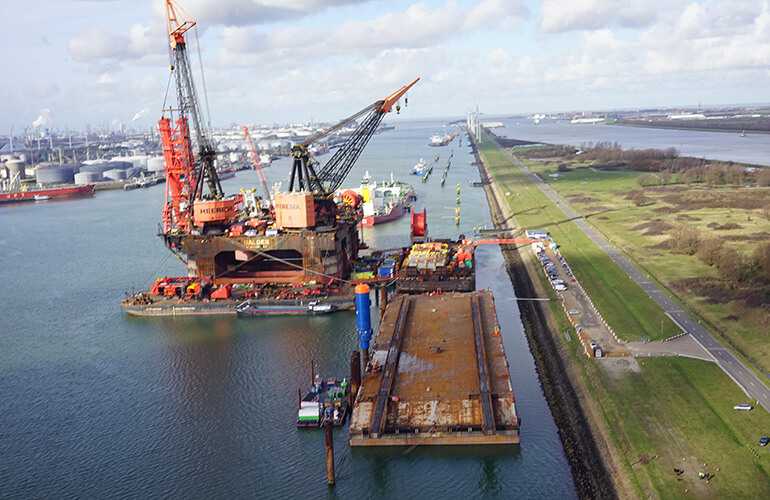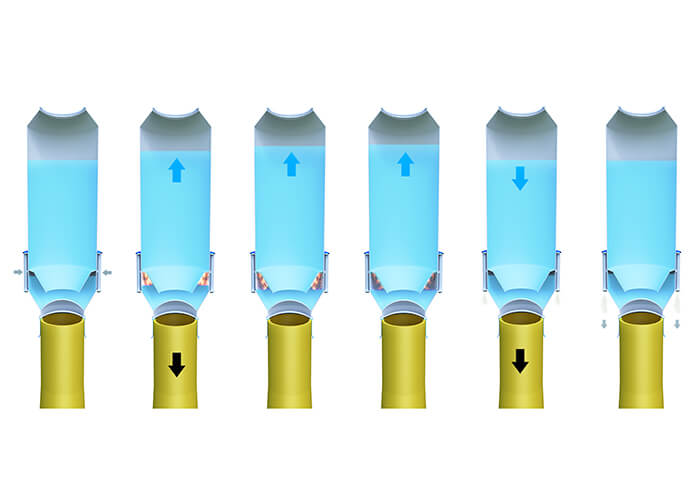By Karl Ove Ingebrigtsen, Director of Low Carbon Power Generation
Lloyd’s Register
Underwater noise is a big concern when installing offshore wind farms. For example, pile driving to secure offshore foundations transmits loud booms through the water and for many miles. The full impact of construction noise on marine life is yet unknown, but potentially dangerous to certain species of sea life. So what if it was possible to reduce offshore construction noise at its source?
That’s exactly what engineers at Netherlands-based Fistuca BV are doing, thanks to a new method for pile driving. To validate the new tool and take it from prototype to commercial reality, the company is enlisting the help of engineers and noise experts at technical consultancy, Lloyd’s Register.

Underwater noise is a big concern when installing offshore wind farms so Netherlands-based Fistuca have been working to reduce construction noise pollution with its unique BLUE Piling technology. The noise technical and engineering experts at Lloyd’s Register are supporting BLUE development by advancing the prototype to commercial reality.
Pile driving re-imagined
Construction of offshore wind-turbine foundations is mostly done by pile driving, using hydraulic hammers. Typically, these hammers consist of a steel ram that weighs between 150 to 200 tons. For maximum efficiency, the ram is released full force onto a pile top to drive it down. It’s a noisy process, as René Smidt Lützen, Lloyd Register’s voice on noise mitigation explains.
“The work is extremely loud and repetitive, which means big efforts must be made to reduce the underwater noise — but this isn’t cheap. Effective noise mitigation strategies and tools cost of about €40 million per wind farm,” he says. That’s according to recent data published in Germany and works out to over $46 million.
“Not surprisingly, the high costs have spiked an interest in driving down the price of noise-mitigation measures when installing offshore wind farms,” adds Smidt Lützen. And this is important to ensure project affordability and compliance.
To protect marine wildlife in Europe, strict rules apply to offshore construction noise. The costs of reducing pile-driving noise can represent up to 15% of installation expenses. Fistuca recognized the problem and set out to solve it. The result: BLUE Piling Technology, which aims to significantly reduce foundation installation costs for offshore wind turbines by saving on noise-reduction efforts.
How does it work? Unlike conventional hydraulic hammers, Fistuca’s BLUE Hammer uses the acceleration of a water column by combustion of a gas mixture to drive the pile into the ground. A combustion cycle pushes the water column in the air, after which it falls back on the pile, delivering a second blow. This cycle is repeated until the pile reaches its required depth.
“Essentially, the BLUE Hammer replaces the steel ram with a big volume of seawater. As a result, the loud ‘metal-on-metal’ impact created by a hydraulic hammer is exchanged for a quieter ‘water-on-metal’ sound,” says Jasper Winkes, Director of Fistuca BV. “What’s more, noise from the water impact is furthermore concentrated at lower frequencies. This is because the physics of shallow-water acoustics reduces noise propagation at these frequencies.”
There are other benefits, too. “Although the new hammer delivers a large amount of energy to the pile, the process of combustion and re-bounce of the water column is relatively slow and, therefore, has a lower impact on each monopile. The gradual increase in force onto a pile head introduces far less material stress in the pile,” explains Winkes. He adds that this lower-impact way of pile driving may result in the foundation experiencing a longer lifetime. “It also opens the possibility of driving a pile with secondary steel attached to it for added stability.”

Fistuca’s BLUE Hammer uses the acceleration of a water column by combustion of a gas mixture to drive a pile into the ground. The loud ‘metal-on-metal’ impact created by a conventional hydraulic hammer is replaced by a quieter ‘water-on-metal’ sound.
Testing to development
Fistuca began the new pile-driving tool’s design and development process in 2011 and continued to test the prototype for the next four years. The Dutch Government and offshore technical company, Huisman Equipment, has since lent support for the development of a full-scale model that, when completed, will be the largest (and least noisy) hammer in the world, the BLUE 25M.
However, according to Winkes, there is more testing to be done. “It’s a new technology in an industry that knows construction costs need to come down — yet most operators feel safer by sticking with what they already use and know well. So we need to demonstrate that the BLUE Hammer can meet the most stringent noise pollution regulations currently around, which are in Germany.”
Another step along the validation journey included asking Lloyd’s Register’s Engineering Dynamics team to validate the noise levels. “We looked at scaled input test data and performed numerical simulations of the expected underwater noise from a prototype device during operation,” says Winkes. “According to our simulations, this has the potential to produce far less noise than typical hydraulic hammers.”
Those results are yet to be demonstrated using the BLUE Hammer in a full-scale trial at sea. “But we achieved valuable data from our reduced-scale measurements,” he says. “The Lloyd’s Register’s team was also able to combine the lab data with a carefully adapted vibro-acoustic model.”
Fistuca is currently planning a full-scale offshore test with the hammer and is working with a number of utilities toward full-scale deployment in the next few years. Although Europe is the company’s home base, the long-term plan is to deploy BLUE Hammer in offshore wind projects worldwide.
“The underwater noise simulations provide valuable insight, which helps us provide quiet and precise pile-driving technology as we gather more offshore data,” says Winkes. “The data is also relevant to wind developers and utility companies that require a high degree of confidence in underwater noise propagation predictions. It’s a win-win.”
Filed Under: Construction, News, Offshore wind, Projects




